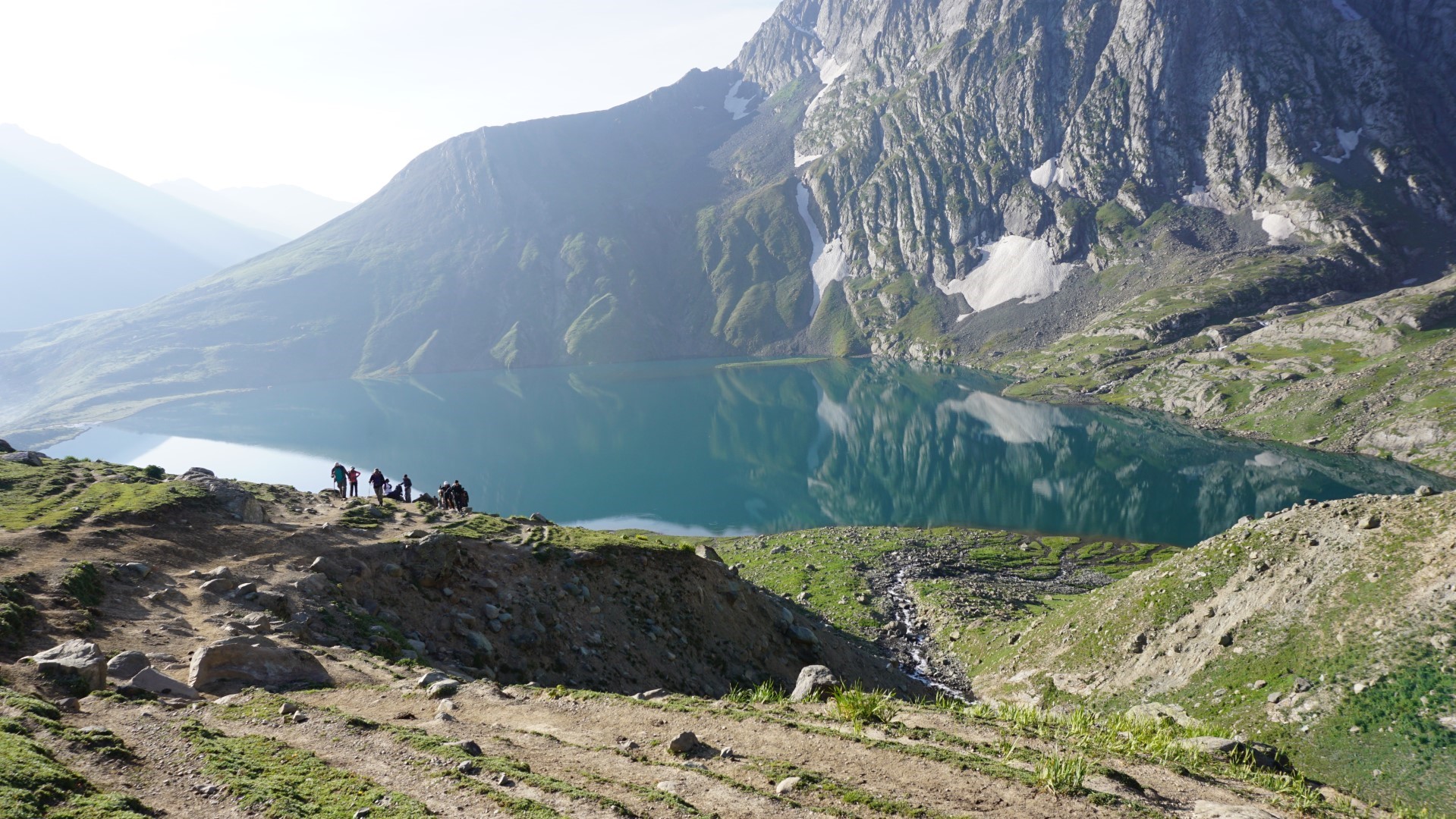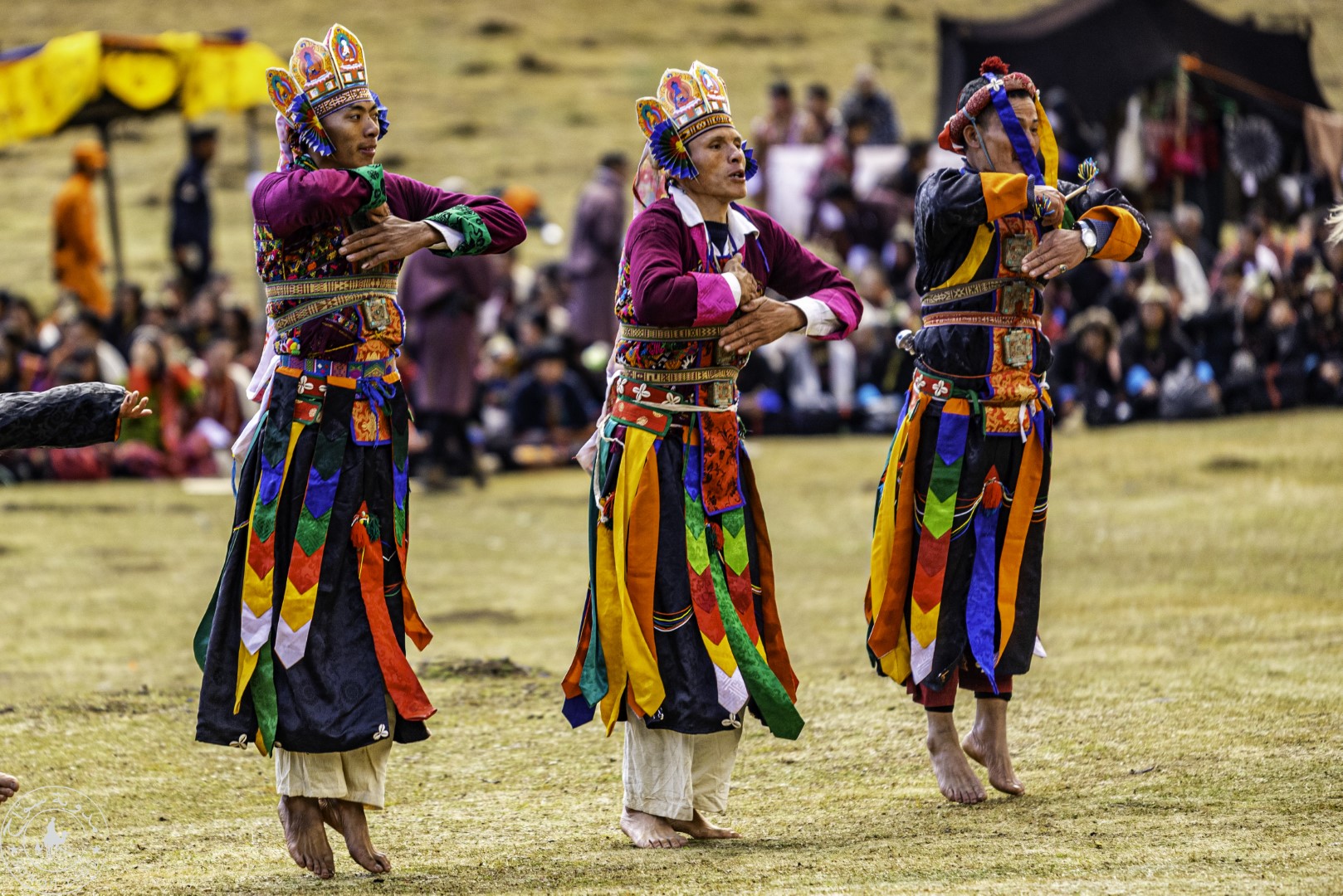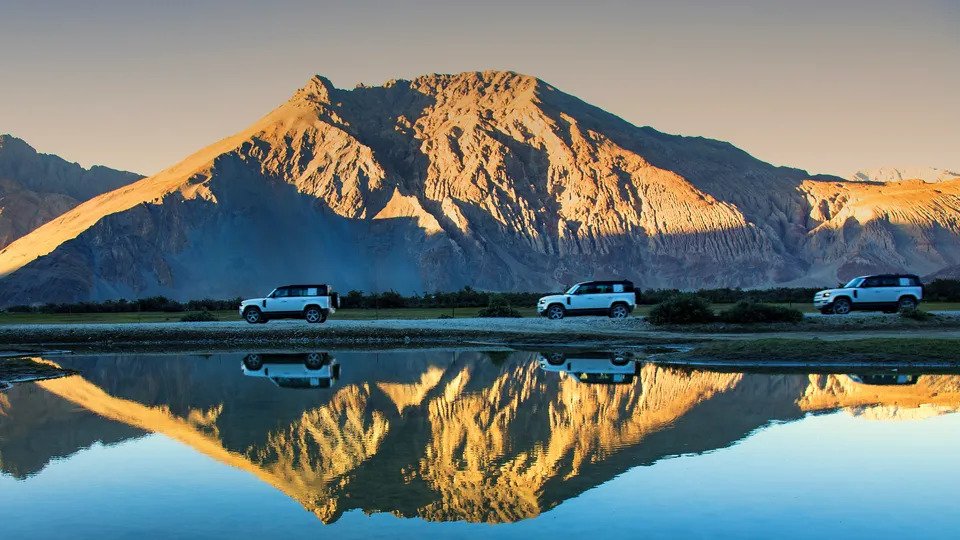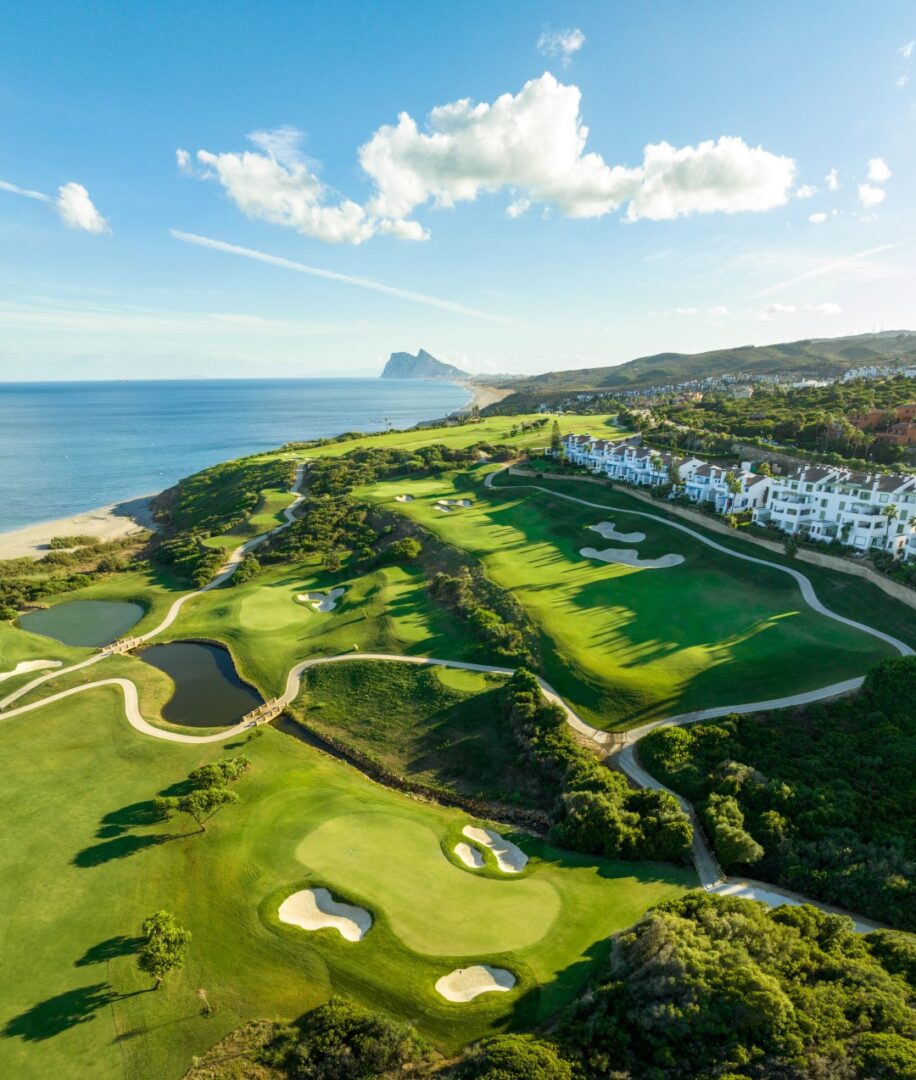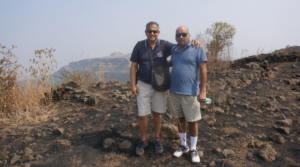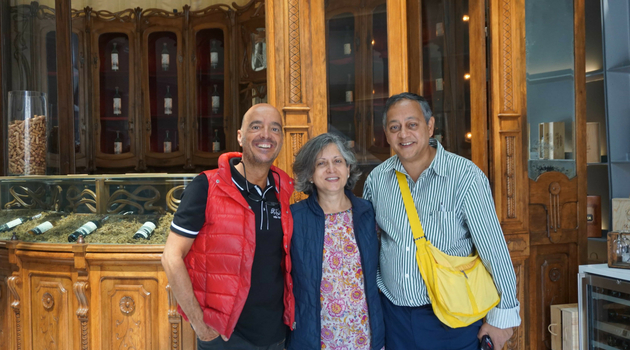

A “Spiritual” Tour through La Rioja: Understanding Wine as a Way of Life
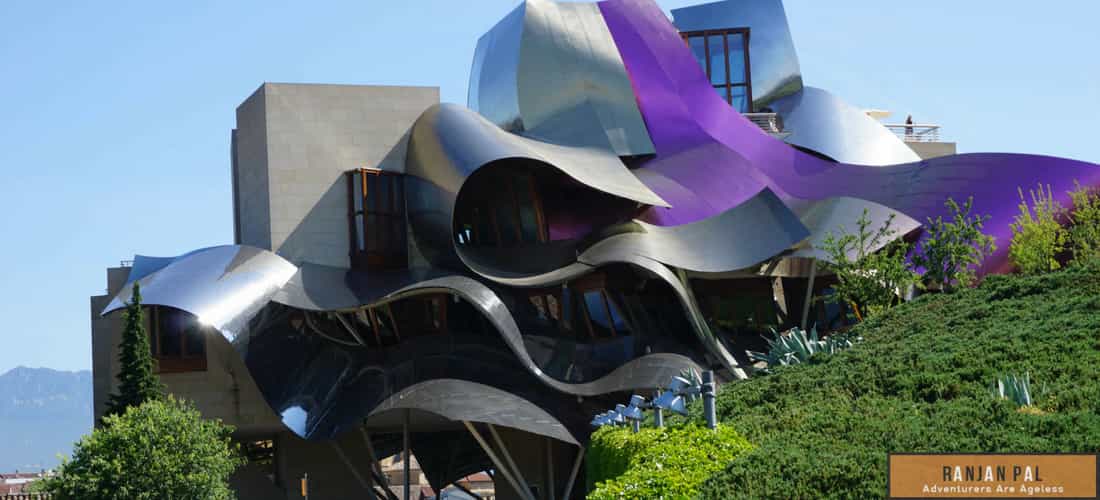

You walk out of your hotel and find yourself standing on the threshold of the Cathedral of Santo Domingo de la Calzada, a magnificent Gothic cathedral. Across the square is the imposing free-standing bell tower, soaring 70 metres above the town of Santo Domingo de la Calzada. The town itself is a delightful little place in the heart of La Rioja, and you can easily walk its cobbled streets from one end to another in half an hour.


The literal translation of the town’s name is The Path of Saint Domingo (and it’s development in the twelfth century was spearheaded by Saint Domingo himself). It owes its importance to being a way station on the Pilgrimage of St. James (Camino de Santiago) which is a large network of ancient pilgrim routes stretching across Europe and coming together at the tomb of St. James (Santiago in Spanish) in Santiago de Compostela in north-west Spain. The parador (hotel) in which we are staying was a former pilgrim’s hospital that had been remodelled into a luxury hotel. While the plush interiors are a far cry from the austere rooms of the original, the large main hall with its Gothic arches descending into octagonal pillars and the medieval artefacts scattered here and there give the place a unique ambience evoking the past. I would highly recommend the Parador of Santo Domingo de la Calzada as an ideal base for forays to the many wineries of La Rioja, all of which are within easy driving distance.
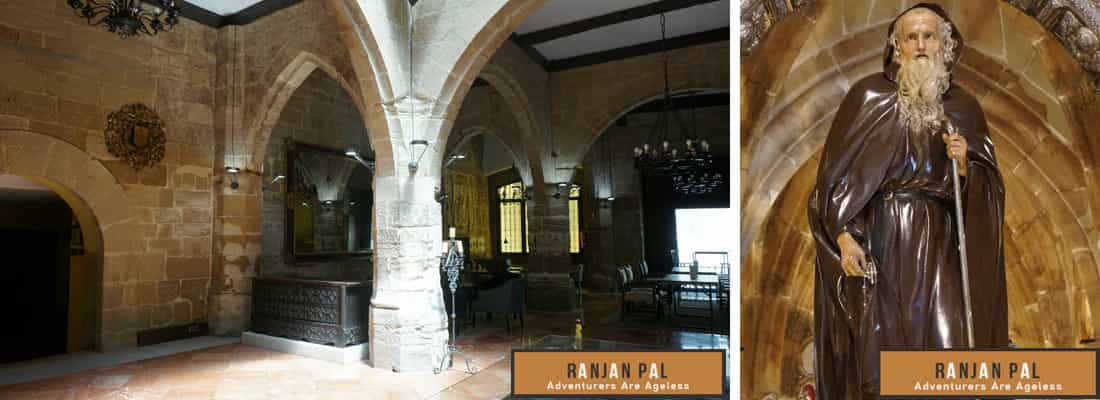

The bodega of Marqués de Riscal is to La Rioja what Robert Mondavi is to California’s Napa Valley, so a visit must be at the top of every wine enthusiast’s wish list. The winery itself is remarkable not only for its excellent wines but also for its astonishing architecture. As you round a bend in the quaint old town of Elciego and first set eyes on the winery, it seems like nothing so much as a scene from of a horror sci-fi movie, appearing like a giant metallic plant unfurling its lavender, gold, and silver leaves as though it is about to consume the human dwelling underneath. The winery, designed by the avant-garde American–Canadian architect Frank Gehry, certainly is an arresting sight, and houses a luxury hotel and spa, a Michelin-starred restaurant, and a banqueting and conference centre. Our little group is taken around by a cheerful young woman called Marta. We are shown the giant crushing and fermentation vats, the cavernous underground cellars, and the impressive bottling and labeling plant. The whole place exudes confidence and self-assurance, much as you would expect of an industry flagship. We end the tour in the tasting room and sample all three grades of red—the crianza, the reserva, and the gran reserva.


From the City of Wine to the Cathedral of Wine, the bodega of Vina Tondonia is the other end of the spectrum from Marques de Riscal. This small family-owned boutique winery was founded 141 years ago in the small wine town of Haro by Rafael Lopez de Heredia, and professes to uphold the finest traditions of wine-making in La Rioja. They grow their own grapes in their own vineyards, make their own barrels in their own cooperage, and pride themselves on aging their wine regardless of considerations of profitability. Indeed, Vina Tondonia is unusual in that it ages its whites in oak barrels for as long as its reds, and we are impressed by the resulting complex bouquet of aromas when we sample the Reserva White at the end of the tour.
We are met in the reception area, appropriately shaped like a wine decanter and designed by the avant-garde Iraqi–British architect Zaha Hadid. It was built to house the old walnut-wood stand used for the international wine exhibitions of 1910 in Brussels and Buenos Aires. Our guide, an ebullient man called Ignacio, in a red sleeveless jacket, leads us with comedic flair down a barrel-shaped ramp into the dungeon-like depths of the winery. We marvel at the old cellars excavated out of rock, with wreaths of ghostly mould hanging from the ceiling. Right at the end is a large vault, whimsically named The Cemetery, which contains the oldest vintages dating back to 1883 and reserved for the exclusive use of the founding family itself.
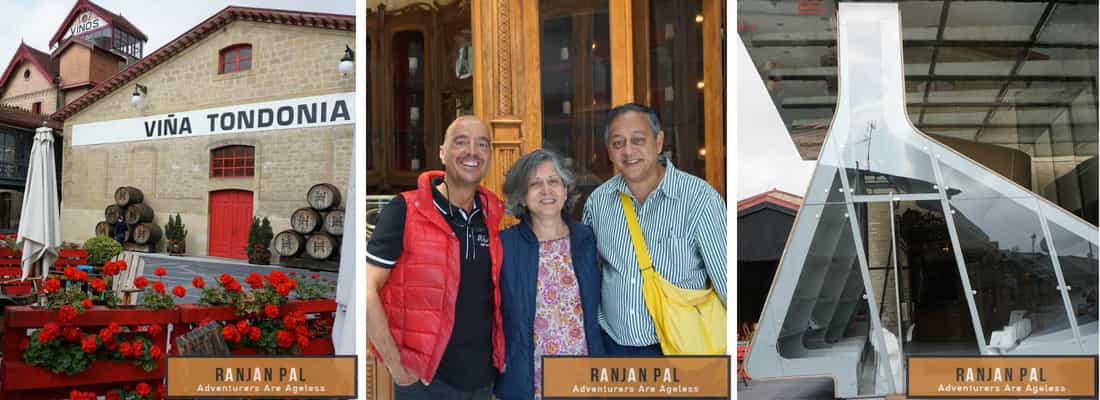

We end our tour of La Rioja with a visit to Bodegas Casa Primicia, which occupies the oldest house in the picturesque town of Laguardia, built at the top of a small hill. My wife Saroj and I being the only visitors, we are taken firmly in hand by our charming guide, Fabiola. The uniqueness of this bodega stems from the fact that it dates back to medieval times. From 1420 the Catholic Church had used it as a repository for farming taxes paid in the form of grapes. From here it was but a short step for the monks to start producing wine. Fabiola takes us down a short flight of steps to show us the square stone vats, each the size of a small room, in one of which an inflated goatskin wine carrier is suspended like a punching bag.
The Church managed Casa Primicia for the next four centuries until it was expropriated by the Spanish government and sold to private owners. Eventually, in 1973, it fell into the hands of Julian Madrid, who restored it to its former wine-making glory, and Casa Primicia’s flagship Reserva rioja proudly bears the name of the founder. Julian Madrid’s family continues to take forward his legacy. Casa Primicia also produces organic wines from grapes grown in the Carravalseca lagoon, one of the three wetlands in the Laguardia region. Back in the tasting room, Fabiola treats us to the range of the winery’s Primicia wines, but for me the Julian Madrid Reserva trumps the organic ones with its mature taste, well-balanced tannins, and long finish.
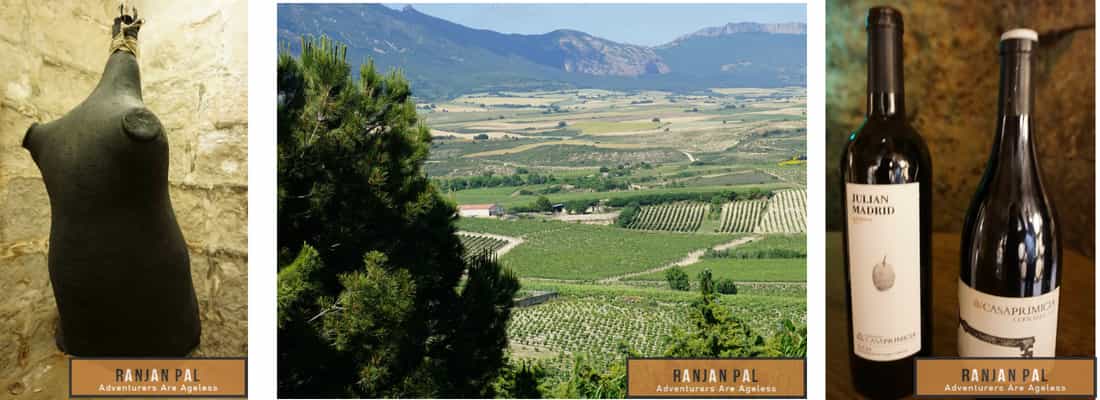

A visit to San Juan de Gaztelugatxe (don’t even try pronouncing the name, but just know that it means castle rock in the Basque tongue) is a must for those who want a bit of physical adventure. This tiny island, off the Basque coast, on the Bay of Biscay, 35 km east of Bilbao. It is connected to the mainland by a three-arched stone bridge and is crowned by a small church dedicated to St. John the Baptist. The church is not the original, having been rebuilt several times over the centuries. Over the course of its tumultuous history (dating back to the ninth century), this strategic outpost has seen service as a hermitage, a convent, a bastion against the kings of Castile, and a prison during the Spanish Inquisition. As we clamber down the rough path from Eneperi on the mainland side, it appears to be a magical place, full of mystery and foreboding in the gloaming. Apparently the makers of the TV series Game of Thrones thought so too, because the Dragonstone episode was shot here. From the bridge, another narrow zigzag path with 241 steps takes you up to the chapel where, as tradition demanded, I rang the bell three times for good luck.
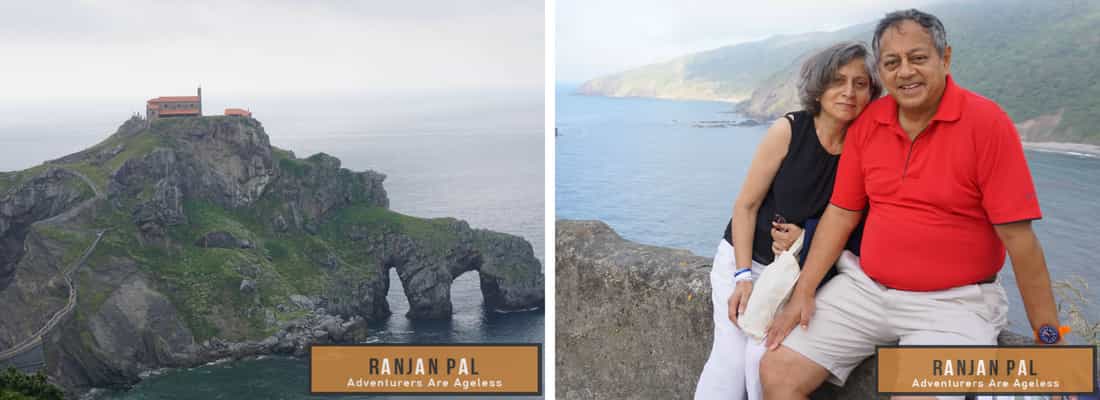

![]()
![]()

